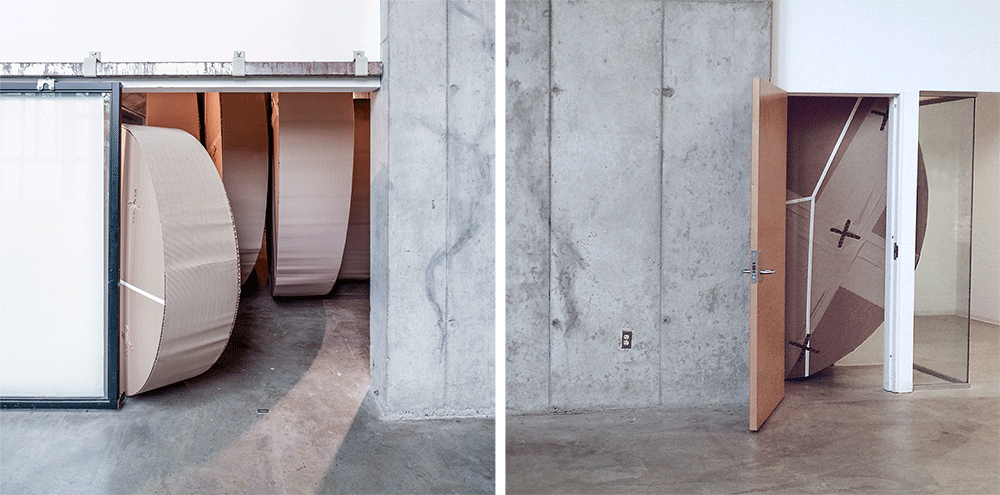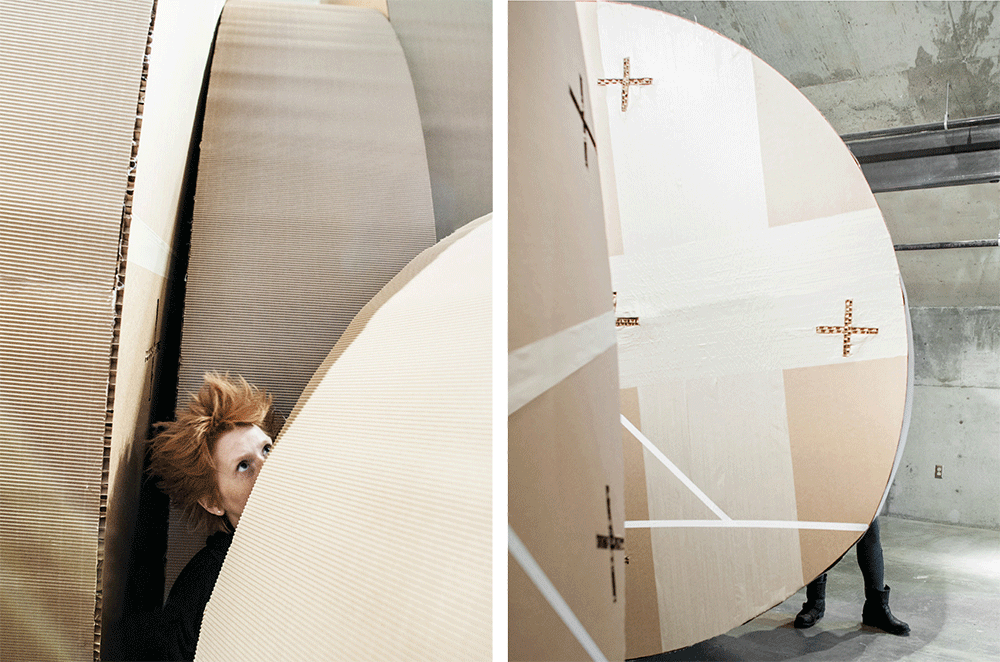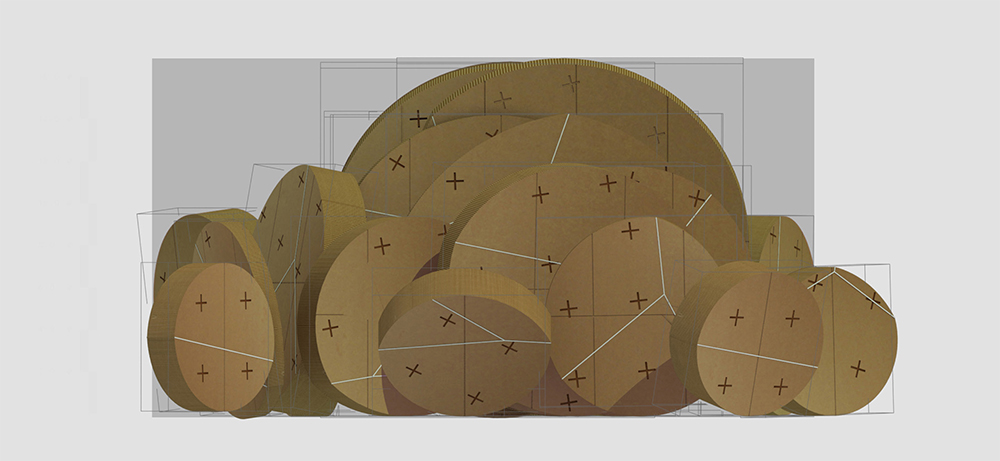
Training Wheels
A swaying disc collection.
INFO
Location: Banvard Gallery, Columbus, OH
Date: 2015
Type: Installation
Essay:
Back and Forth Offramp No. 13
Mentions:
Cover of Project No.7
Notes on Ruin Porn McLain Clutter in The Avery Review No. 18, 2016
Exhibitions:
Inscriptions Harvard GSD 2018
The Drawing Show Yale SoA 2018
The Drawing Show A+D Museum 2016
One Night Stand 2015
Funding: Ohio State Knowlton School of Architecture LeFevre Emerging Practioner Fellowship
Assembly Team: Alex Mann, Amanda Pierce, and many other great Knowlton students.
Location: Banvard Gallery, Columbus, OH
Date: 2015
Type: Installation
Essay:
Back and Forth Offramp No. 13
Mentions:
Cover of Project No.7
Notes on Ruin Porn McLain Clutter in The Avery Review No. 18, 2016
Exhibitions:
Inscriptions Harvard GSD 2018
The Drawing Show Yale SoA 2018
The Drawing Show A+D Museum 2016
One Night Stand 2015
Funding: Ohio State Knowlton School of Architecture LeFevre Emerging Practioner Fellowship
Assembly Team: Alex Mann, Amanda Pierce, and many other great Knowlton students.
Big things often seem more serious than small things. Big things are more weighty, more in the way, more noticeable, more aggravating. They just seem more real. Small things, on the other hand, are easily brushed aside and forgotten, as though they were memories of something that never happened. This installation aspires to make something big seem as insignificant as something small.
An installation of architecture presents itself as something big. It wants to be taken seriously—like a building, a serious big thing. But installations are limited by their size and their clear separation from building: they can only desire to be big and serious. In this installation, we made that desire manifest in the tension between the many large wheels and their model-like materiality.
The wheels are made of cardboard, cheap yet strong. Cardboard makes good models, but not very good buildings. The physicality of the cardboard emphasizes the qualities of an overscaled model in the larger-than-a-person objects. Furthermore, the wheels are staged like large drawings, sharing a consistent scale in geometry, notation, material, and concept.
Although big things usually suggest stability, these wheels can roll into almost any configuration. They are lightweight and available for rearrangement at any time. The suggestion of mutability put forth by an assemblage of wheels is just that—a suggestion—since the gallery is only slightly larger than the collection. Additionally, the geometry of the wheels is off—kinks in the circles, askew centers of gravity—constraining them to rocking rather than rolling. Instead of implying a sense of infinite movement, these wheels suggest only a slight disruption from a stable location.
An installation of architecture presents itself as something big. It wants to be taken seriously—like a building, a serious big thing. But installations are limited by their size and their clear separation from building: they can only desire to be big and serious. In this installation, we made that desire manifest in the tension between the many large wheels and their model-like materiality.
The wheels are made of cardboard, cheap yet strong. Cardboard makes good models, but not very good buildings. The physicality of the cardboard emphasizes the qualities of an overscaled model in the larger-than-a-person objects. Furthermore, the wheels are staged like large drawings, sharing a consistent scale in geometry, notation, material, and concept.
Although big things usually suggest stability, these wheels can roll into almost any configuration. They are lightweight and available for rearrangement at any time. The suggestion of mutability put forth by an assemblage of wheels is just that—a suggestion—since the gallery is only slightly larger than the collection. Additionally, the geometry of the wheels is off—kinks in the circles, askew centers of gravity—constraining them to rocking rather than rolling. Instead of implying a sense of infinite movement, these wheels suggest only a slight disruption from a stable location.






